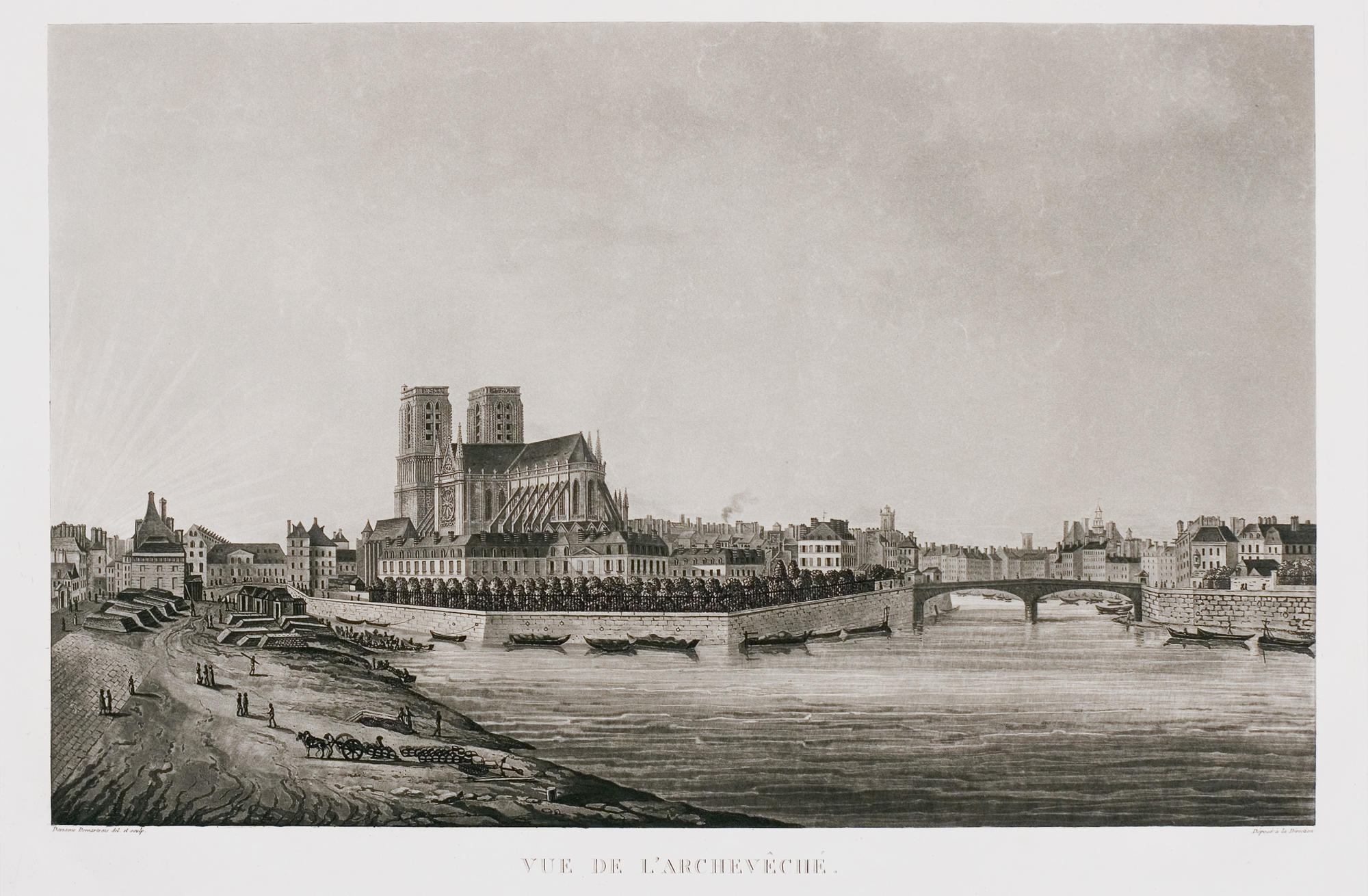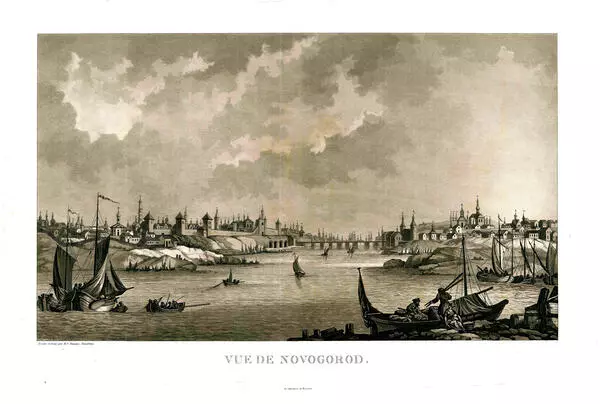The engraver Michel-Francois Damame-Demartrais depicted Ile de la Cité in Paris looking from South-East from Tournelle embankment. On the engraving we can see the buildings of the Archiepiscopacy and the catholic cathedral Notre-Dame de Paris, on which many architects worked at different times (Jehan de Chelles, Pierre de Montreuil and others). Ile de la Cité is one of the most ancient districts in Paris; it looks like a fortress sailing in the waters. The compact planning of the island is clearly visible on this sheet: the old hospital building Hôtel-Dieu, the royal palace, the market, small churches and houses. Later, in the middle of the 19th century, during the urban redevelopment exercise baron Haussmann commissioned bringing down everything between the palace and the cathedral and constructing the buildings of police, court martial and three и through streets verging into bridges.
The engraver depicted Notre-Dame the way it looked after the Great French Revolution: in 1789 the spire of the 13th century, the marigold windows of the nave made of stained glass, sculptures and statues were demolished. In 1841, Eugèn Emmanuel Viollet-le-Duc began the restoration and redevelopment of the cathedral, this work lasted for 23 years.
The engraver depicted Notre-Dame the way it looked after the Great French Revolution: in 1789 the spire of the 13th century, the marigold windows of the nave made of stained glass, sculptures and statues were demolished. In 1841, Eugèn Emmanuel Viollet-le-Duc began the restoration and redevelopment of the cathedral, this work lasted for 23 years.




